Cafe la Morelia is an authentic, traditional plantation some 30 minutes ( by rented car – ching!) from the Hacienda Bambusa. Have you ever noticed at fancy restaurants and fancy hotels that nothing is ever free? Everything is available but always in addition to the already huge sums of money being paid to eat / stay there. I am a conflicted backpacker – or maybe I’m just cheap! Our English-speaking guide to cafe la Morelia is Juan. He learned English during a hot summer spent in the English seaside town of Bournemouth. I didn’t have the nerve to ask whether ‘hot’ referred to the girls or the weather, although I’d never really associated either with Bournemouth. I’m babbling; let’s get back to the story. Christi and I begin our tour of café la Morelia in the fields looking at the coffee plants themselves. The elevation (1260 meters) supports the caturra variety of coffee bean and currently 40 hectares are devoted to growing it. The remaining 30 hectares are given over to other cash crops such as plantain, which provide most of the income necessary to support the coffee business.
I’m not much of a coffee drinker, but Christi is fascinated by the details: coffee beans are picked when they are red (green beans are not yet ripe). The beans then go through a series of processing steps to remove the skin and sugary coating before being dried and sized. According to Juan, small/medium-sized beans make the best/gourmet coffee, while the larger beans are used to make traditional coffee. Before the beans are roasted they are further sorted to remove contaminated beans (bitten by insects) wrong size, or other defects. Next the beans are roasted for about 15-minutes to provide the dark color and correct texture. A pound of ground gourmet coffee costs COP$14,000 (US$7). By comparison the lowly coffee bean picker earns COP$6,000 (US$3) per gallon of beans picked, although food and accommodation at cafe la Morelia is included. Most pickers are only employed for the two major coffee bean harvests (Mar-May and Oct-Dec), however, so it’s a precarious life.
Finally we get to the serious bit: drinking the damn stuff. Sebastian is the guardian of taste and quality at Cafe la Morelia. Christi is in her element here as she follows Sebastian in snorting, slurping, and savoring several examples of coffee prepared on the plantation. Coffee is definitely not my thing and the samples I try all taste rather bitter to me. Still it’s a fantastic tour and we’re given a souvenir bag of goodies, including coffee, as we leave. I try to repay the favor by tipping Juan, but he refuses it; says it is unnecessary. I don’t think I’ve ever met anyone who has refused a tip before. Colombia truly is a unique country.
After lunch back at Hacienda Bambusa, Christi and I finally explore the plantation. The owner of the plantation, Camilla, explains that here is a 3-mile round trip to a viewpoint, which will still get us back to the Hacienda in time for afternoon tea (or in Christi’s case, coffee). I guess the thing about luxury is that you never have to exert yourself or stress out overly. No doubt it’s possible to pay someone to do that on your behalf. Christi and I therefore enjoy a leisurely stroll (even the word hike sounds too arduous) through rolling farmland rich with exotic flowers plus stands of banana, papaya, and oranges to a beautiful viewpoint over the valley below, replete with river and more farms. We also spot some bizarre cows with rather large ears and a pendulous, flapping dewlap. Apparently both of these features are adaptations used to dissipate heat, and, boy, is it humid here (another reason to amble along gently). Not only do we make it back to the hacienda in time for afternoon tea, but we also manage a siesta before dinner. Now this is traveling!
Blog post by Roderick Phillips, author of Weary Heart – a gut-wrenching, heart-wrenching, laugh-wrenching tale.
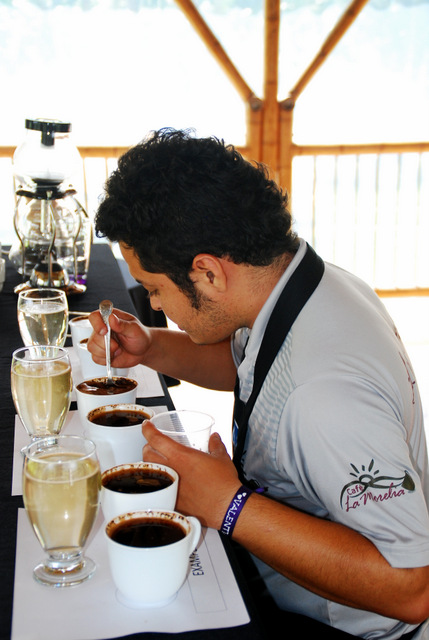
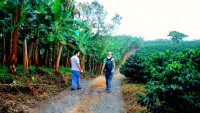
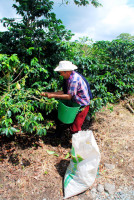
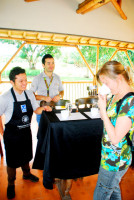
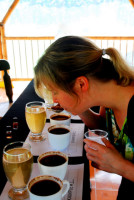
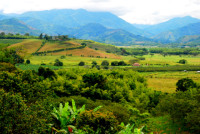
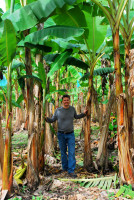
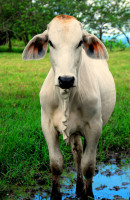

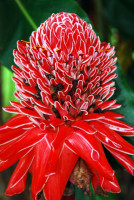
Speak Your Mind